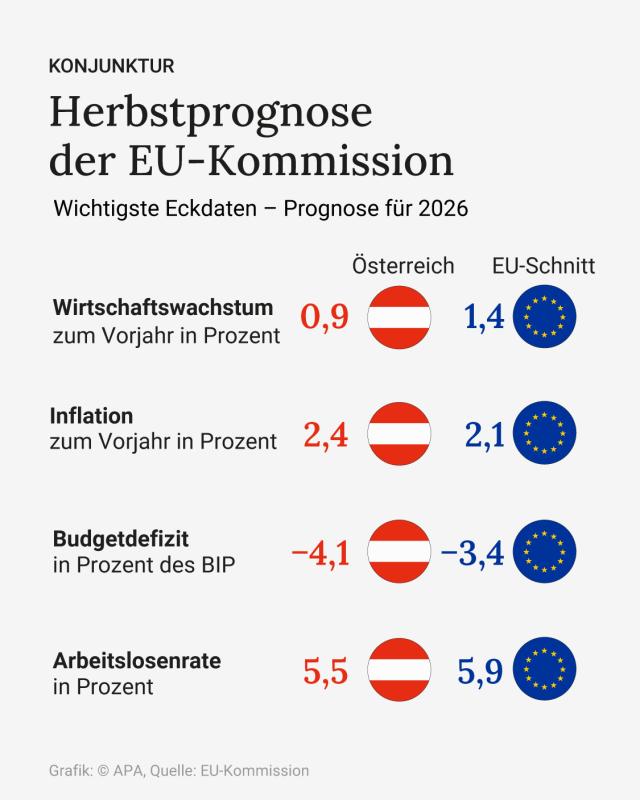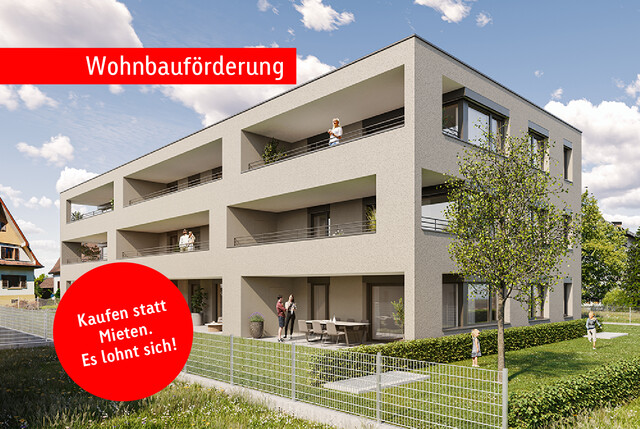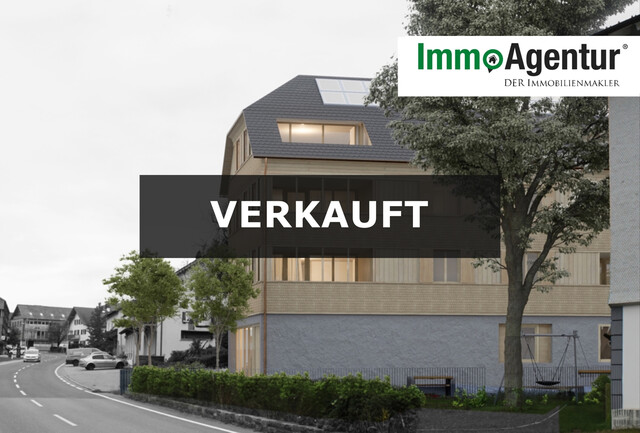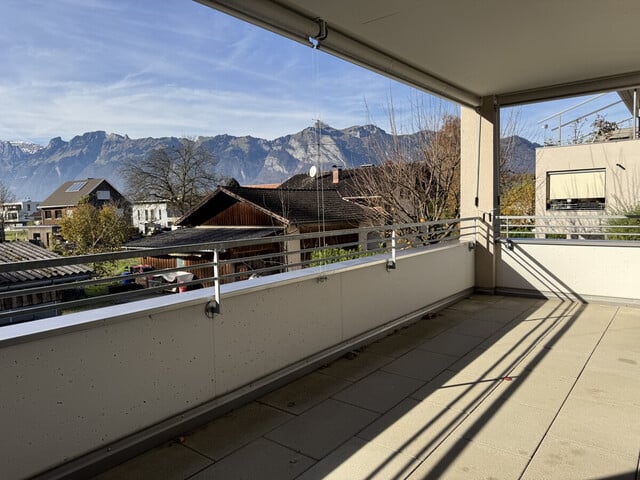Forecast: Austria 2026 Among EU's Laggards in Economic Growth

The EU Autumn Economic Forecast presented on Monday in Brussels predicts a growth of 0.9 percent for Austria. Only Ireland with 0.2 percent and Italy with 0.8 percent perform worse. At the top is Malta with a growth of 3.8 percent, followed by Poland with 3.5 percent. For the entire EU, an increase in GDP of 1.4 percent and for the Eurozone of 1.2 percent is expected.

Economic Growth in Austria to Rise to 1.2 Percent in 2027
For the current year, the EU Commission expects a growth of 0.3 percent for Austria, and 1.2 percent for 2027. These figures are at least better than in the spring forecast from May: At that time, a contraction of GDP was still predicted for this year, marking the third consecutive year. The budget deficit figures remain bleak: This year, it will significantly exceed the permissible value of 3.0 percent at 4.4 percent of economic output. Next year, the deficit is expected to slightly decrease to 4.1 percent, but rise again to 4.3 percent the year after (EU average this year: 3.3 percent).

Austria Not Alone with High Budget Deficit in EU
Austria is not alone with poor deficit figures: Alongside Germany, Belgium, Estonia, France, Slovakia, Finland, Hungary, Poland, and Romania will not meet the 3-percent Maastricht threshold by 2026. The EU Commission will present the so-called Autumn Package of the European Semester with economic and fiscal policy recommendations to the EU countries next week. Austria will be under particular scrutiny here due to the ongoing EU deficit procedure.
Inflation in Austria Significantly Above EU Average
In terms of inflation, Austria is again significantly above the EU average with 3.5 percent in 2025 according to today's forecast, compared to the EU average of 2.5 percent and the Eurozone average of 2.1 percent. The domestic inflation rate is expected to decrease to 2.4 percent in 2026 and 2.2 percent in 2027. Inflation in the Eurozone is expected to meet the European Central Bank's target of 2 percent next year at 1.9 percent and in 2027 at 2.0 percent; for the entire EU, 2.1 percent next year and 2.2 percent in 2027 are expected.
Economic Growth in Austria 2025 Exceeds Expectations
The Commission emphasizes in a statement that growth in the first three quarters of 2025 exceeded expectations. Initially, the development was driven by an increase in exports in anticipation of tariff hikes, but the EU economy continued to grow in the third quarter. Looking ahead, the Brussels authority expects "moderate growth despite a challenging external environment during the forecast period."
EU Commissioner Dombrovskis Warns of Uncertainties
The responsible EU Commissioner Valdis Dombrovskis emphasized at the press conference that debt and deficit ratios in some member states are likely to rise slightly: "We must remain vigilant to ensure financial stability." He stressed that today's forecast is subject to "considerable uncertainty." Efforts to increase competitiveness and unlock Europe's full growth potential must be doubled, urged the Latvian.
He warned that "trade policy decisions by the USA and the reactions of other major players like China would dampen global trade." The forecast assumes that "all tariffs introduced or credibly announced by the USA by the deadline" would remain in effect throughout the forecast period. The uncertainty regarding trade policy remains high: "The impact of current tariffs and non-tariff trade barriers on the European economy could be greater than expected," said Dombrovskis.
Plakolm: Reduce Bureaucracy
"We need to look at the issue of location holistically, because our entrepreneurs are very export-oriented," commented European Minister Claudia Plakolm (ÖVP) on the poor forecast for Austria on Monday in Brussels. "Primarily, we export and trade with our EU neighbors and EU member states." She therefore calls for "tangible results and noticeable relief" in reducing bureaucracy. Bureaucracy costs "an incredible amount of money," said the minister. "However, we need a strong location if we want to tackle the challenges of the future."
(APA/Red)
This article has been automatically translated, read the original article here.
Du hast einen Hinweis für uns? Oder einen Insider-Tipp, was bei dir in der Gegend gerade passiert? Dann melde dich bei uns, damit wir darüber berichten können.
Wir gehen allen Hinweisen nach, die wir erhalten. Und damit wir schon einen Vorgeschmack und einen guten Überblick bekommen, freuen wir uns über Fotos, Videos oder Texte. Einfach das Formular unten ausfüllen und schon landet dein Tipp bei uns in der Redaktion.
Alternativ kannst du uns direkt über WhatsApp kontaktieren: Zum WhatsApp Chat
Herzlichen Dank für deine Zusendung.








